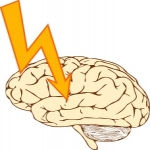Stroke is such a commonplace in the US that it’s rare to not know someone who has been directly effected by it. It may come on sudden and unexpected but there are ways to prevent or to decrease the risk if suffering from a stroke. Knowing the signs are the first step.
There are three kinds of stroke and different symptoms for each:
- Ischemic Stroke– 80% of strokes that occur are these.
- Hemorrhagic Stroke– 15-20%
- Transient Ischemic Stroke (TIA)– or Mini stroke

Know the signs:
Ischemic symptoms include- loss of strength or sensation on one side of the body, problems with speech and language or changes in vision or balance. They usually occur at night or first thing in the morning. Symptoms develop over a few minutes or worsen over hours. Often a TIA (transient ischemic attack) or “mini-stroke” may offer some warning of a major ischemic stroke.
Hemorrhagic symptoms include- very severe headache, nausea and vomiting, partial or total loss of consciousness
Transient Ischemic symptoms are very similar to the Ischemic stroke but only last a short time.
Risk Factors for Stroke
Controllable | Uncontrollable |
|
|
|
|
|
|
|
|
|
|
| |
|
Here are some steps you can take to guard against the possibility of a stroke occurring:
- Control your blood pressure. High blood pressure is the single most important risk factor for stroke and heart disease. 120/80 or less is optimal.
- Find out if you have atrial fibrillation
- Find a healthy outlet for stress, such as meditation, yoga, or deep breathing exercises.
- Exercise regularly at least 30 minutes most days of the week.
- Eat plenty of low-fat, high-fiber foods such as fresh fruits and vegetables and whole grains.
- Don’t smoke. If you do, quit!
- If you have narrowed arteries, your doctor may suggest anti-clotting medications such as aspirin or a prescription drug to reduce the chance of clots. Surgical procedures, such as carotid endarterectomies and carotid stenting, are sometimes used to widen narrowed vessels in the neck.
- If you have diabetes, take steps to control it. This disease can damage blood vessels and increase the risk of stroke.
- If you drink alcohol, drink moderately.
- Know the symptoms of stroke.
If you have already suffered a stroke and are looking for a way to get back some function in your life. Consider making an appointment with Dr. Patel or one of his nurse practitioners.
By: Kelle Hartman, LPN

